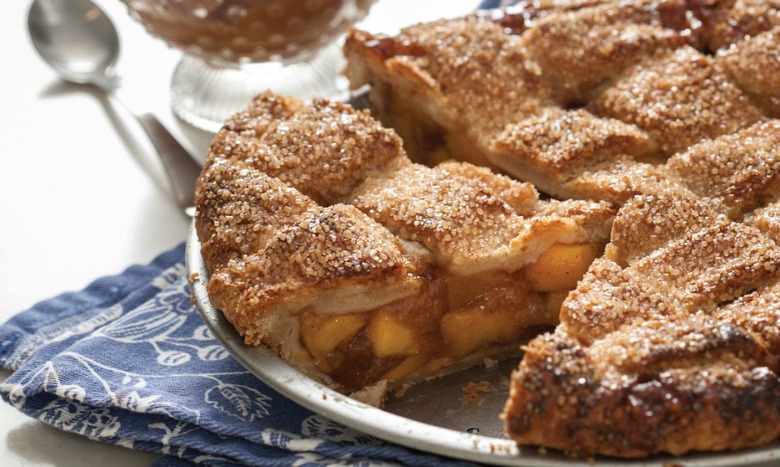Magpie Pie Dough
Magpie Pie Dough
Magpie’s signature flakey pie dough is the perfect, tender base for all of Holly Ricciardi’s pie creations. — Angela CarlosMakes Enough Dough for any of the Following: 2 (9-inch / 23-cm) single-crust pies, 1 (9-inch / 23-cm) double-crust or lattice-top pie, 8 (4 x 2-inch / 10 x 5-cm) potpies, 12 (2 x 1-inch / 5 x 3-cm) mini pies, 1 (9 x 3-inch / 23 x 8-cm) quiche, or 8 (4-inch / 10-cm) hand pies (plus trimmings).Reprinted with permission from Magpie © 2015 by Holly Ricciardi, Running Press, a member of the Perseus Books Group.
Servings
1

Ingredients
- 2 1/2 cup all-purpose flour
- 2 tablespoon granulated sugar
- 1 teaspoon fine salt
- 3/4 cup cold unsalted butter, cut into quarter-inch cubes and frozen
- 1/4 cup vegetable shortening, preferably in baking stick form, frozen and put back in the freezer
- 1/2 cup plus a tablespoon of ice-cold water
Directions
- Combine the flour, sugar, and salt in the bowl of a food processor and pulse the machine 3 times to blend. Scatter the frozen butter cubes over the flour mixture. Pulse the machine 5 to 7 times, holding each pulse for 5 full seconds, to cut all of the butter into pea-size pieces.
- Scatter the pieces of frozen shortening over the flour-and-butter mixture. Pulse the machine 4 more 1-second pulses to blend the shortening with the flour. The mixture will resemble coarse cornmeal, but will be a bit more floury and riddled with pale butter bits (no pure-white shortening should be visible). Turn the mixture out into a large mixing bowl, and make a small well in the center. If you find a few butter clumps that are closer to marble size than pea size (about ¼ inch in diameter), carefully pick them out and give them a quick smoosh with your fingers. Pour the cold water into the well.
- Use a curved bowl scraper to lightly scoop the flour mixture up and over the water, covering the water to help get the absorption started. Continue mixing by scraping the flour up from the sides and bottom of the bowl into the center, rotating the bowl as you mix, and occasionally pausing to clean off the scraper with your finger or the side of the bowl, until the mixture begins to gather into clumps but is still very crumbly. (If you are working in very dry conditions and the ingredients remain very floury and refuse to clump together at this stage, add another tablespoon of ice-cold water.) Lightly gather the clumps with your fingers and use your palm to fold over and press the dough a few times (don’t knead! —just give the dough a few quick squishes), until it just begins to come together into a single large mass. It will be a raggedy wad, moist but not damp, that barely holds together; this is exactly as it should be—all it needs is a good night’s rest in the fridge.
- For single- and double-crust pies, mini pies, potpies, or hand pies: Divide the dough into 2 equal portions, gently shape each portion into a flat disk 1½ to 2 inches thick, and wrap each tightly with plastic wrap. For quiche, leave the dough in one piece, flatten it into a single large disk 1½ to 2 inches thick, and wrap tightly with plastic wrap.
- No ifs, ands, or buts, the dough must have its beauty sleep. That means 8 hours in the refrigerator at the very least. Extra rest is just fine; feel free to let the wrapped dough sit in the fridge for up to 3 days before rolling. (The dough may discolor slightly. No worries. This is merely oxidization and will not affect the flavor or appearance of your finished piecrust.)